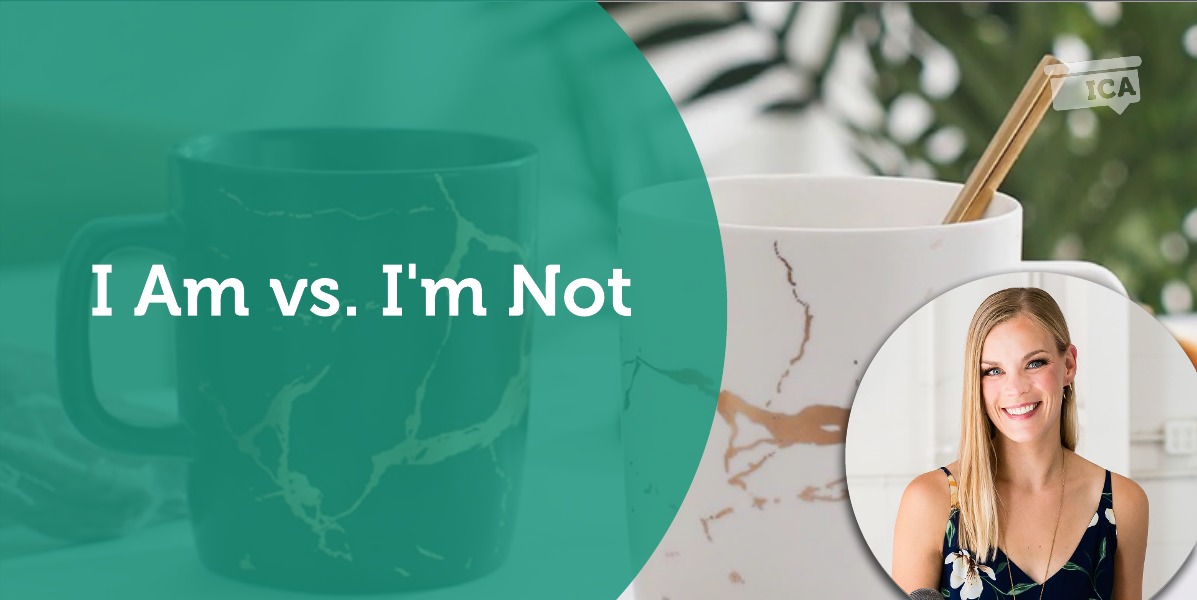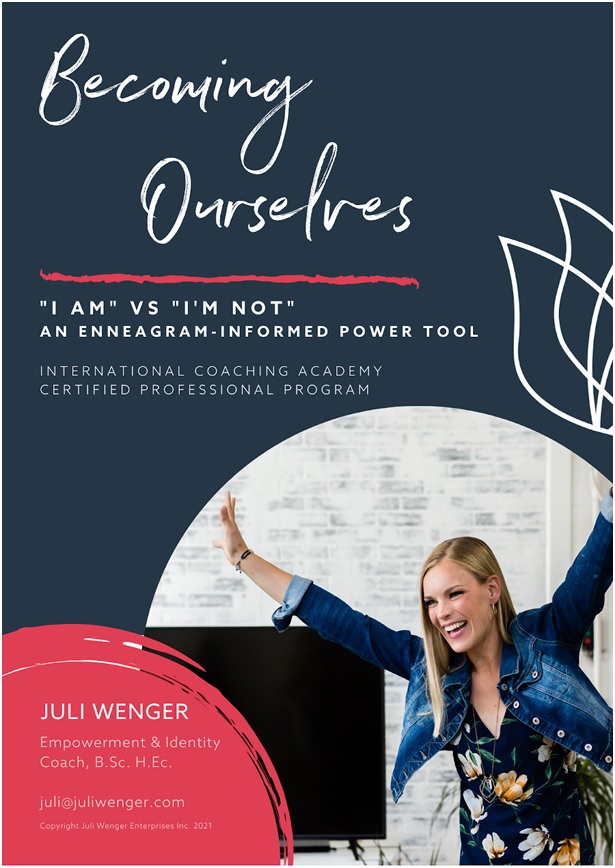 A Coaching Power Tool Created by Julian Wenger
A Coaching Power Tool Created by Julian Wenger
(Empowerment and Identity Coach, CANADA)
 An Introduction
An Introduction
One of the foundational issues that I see in my coaching practice is an over-identification with stories that don’t serve the client. For example “I’m not smart enough”, “I’m not naturally talented in that area”, or “I’m not wired for that.” All of which inform the subconscious to go looking for reasons those things are true – widely referred to as confirmation bias. These attachments to these stories keep clients “safe” from the uncertainty of change, but at the same time keep them “stuck” with the sense that they can’t move forward.
The “I am” vs “I’m not” power tool provides a framework to choose a different story, one that is empowering, and points the subconscious energy to go looking for proof that will serve the client in getting “unstuck”.
Integrating the Enneagram as a personality tool, Beatrice Chestnut writes about how it’s important to understand that personality is considered to be:
a false self, necessary up to a point to safely interact in the world, but also a means by which we lose touch with our true self.
Up to a point is the key language here. As we grow older and gain more context on and power in our life, many of the personality constructs we have created over time to maintain safety in the world and have our needs met will no longer serve us, or our clients. Gaining awareness of and shifting away from these automatic patterns of thought, and therefore feeling and behavior is an imperative piece of helping clients get “unstuck.
An Explanation
Understanding who we are is a foundational piece of our personal growth and development journey. Who we believe ourselves to create our
character structure, and following that comes our behavioral patterns and beliefs about who we are.
Without conscious effort, we function to a large degree mechanically, according to habitual patterns, as we go about our every day’s lives… we respond in predictable, repetitive ways according to the dictates of our early programming. (Beatrice Chestnut, Ph.D.)
Also, the stories we tell ourselves about who we are creates space for overidentification with a piece of our identity and minimize the rest of ourselves and our personal power.
Overidentifying with our success or failure, allowing the fragments to lay claim to the whole, and falling into the addictive loop of our mental and emotional preoccupations keep us stuck. This is what entrenches the illusions of our ego’s mythologies. Christopher Heuertz, “The Sacred Enneagram”
So then, the key is in the “waking up” and intentionally shifting the narrative from the old programming, creating a new intention, and internalizing a new story.
Application
As coaches, we are trained to pay close attention to the client’s word choice. Watching for a particular language and challenging the client both for its meaning and for empowering alternative word choices is one of the most powerful ways we can impact client transformation.
Language to watch for:
“I’m just”
“I’m not”
“I don’t know”
“I can’t”
Challenging the Perspective:
When this language comes up it’s important to bring it to the client’s attention:
Holding space for and allowing the client time to get curious about the language they’re using and where it’s coming from is an important piece of this process. Give time for exploration around this as it often provides insight into how the client is attaching to their stories. It’s important to help the client observe their patterns and habits and challenge them in a way that will help remove emotional attachment to the story, however temporarily.
Framing out the alternative:
Once you have allowed some time for exploration and challenges of the client’s ideas, help them to discover alternative perspectives.
After framing out an alternative perspective with the client, create space to explore this empowering option as well.
You are Not Your Stories
Reflection
Identity is the foundation of all personal growth work. Regardless of whether the client is looking to create momentum in relationships, at work, as a leader, or in developing more self-compassion, gaining clarity on who they are below the surface of their stories is a key component of the empowerment needed in all areas of life. Removing the “layers” of stories the client has wrapped around who they believe to be and the over-identification to them allows the client to “wake up” and embrace a new awareness of self. This takes time and is a continual journey; however as the client unwraps one story at a time and replaces those stories with more empowering ones, as they continue to “wake up” to who they are, the impact flows ours into the various areas of their life.
This process allows us to:
observe and study ourselves more objectively…[it] gradually deepens self-knowledge by building our conscious understanding of who we really are and what is really going on…The practice of looking for your own automatic patterns of thinking, feeling, and acting builds a more objective interior capacity for self-awareness separate from these patterns. (Beatrice Chestnut Ph.D.)
Remind the client that they are not their stories. There is an essence to all of us and the “work” is to be open and vulnerable enough to discover it, to see the power within us, and permit ourselves to be authentically and wholly us.
References
“The Sacred Enneagram”, ChistopherHeuertz, Zondervan, 2017.
“The Complete Enneagram”, Beatrice Chestnut, Ph.D., She Writes Press, 2013.